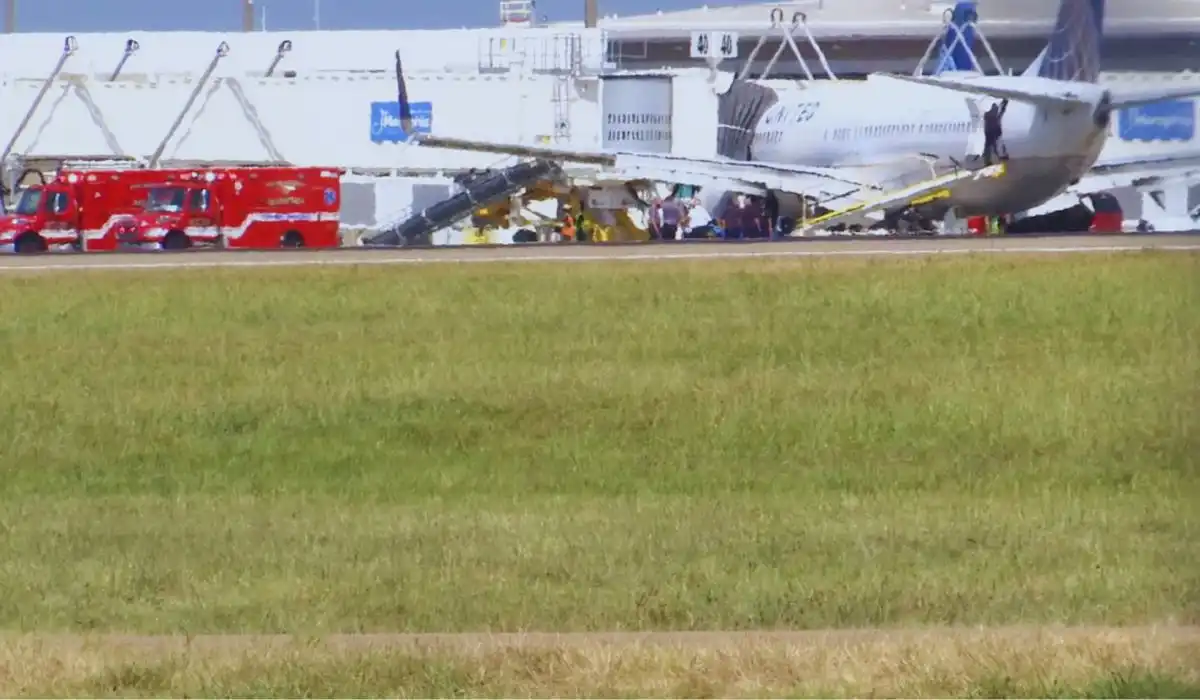In a troubling incident that highlights ongoing concerns about flight safety, a United Airlines Boeing 737 was forced to make an emergency landing in Memphis after experiencing severe turbulence. The turbulence, which occurred during a flight from Cancún, Mexico, to Chicago, left seven people injured, with one passenger requiring hospitalization.
The unsettling event unfolded on Wednesday as the aircraft, which was carrying 179 people including seven crew members, encountered turbulent conditions while flying over Louisiana. The turbulence was reported just before the plane was forced to divert to Memphis. The Federal Aviation Administration (FAA) confirmed that the turbulence was severe enough to necessitate the emergency landing.
Emergency Response and Passenger Injuries
United Airlines released a statement explaining that Flight 1196 diverted to Memphis following a period of intense turbulence, despite the seatbelt sign being illuminated at the time. Emergency medical responders were on standby and met the aircraft upon its arrival. According to the airline, one passenger was transported to a local hospital, although the specific details regarding their condition have not been disclosed by the Memphis Fire Department. The remaining six injured individuals opted to forgo medical treatment.

The flight, which was initially scheduled to land at Chicago’s O’Hare International Airport, eventually completed its journey two hours later than planned. The delay was a direct result of the emergency diversion and subsequent medical attention.
Recent Trends in Turbulence-Related Incidents
The incident underscores a troubling trend in aviation safety. Recent months have seen several notable turbulence-related disturbances. In May, a Singapore Airlines flight encountered turbulence that led to the death of one passenger and injuries to 71 others. More recently, an EasyJet flight from Corfu to London experienced turbulence that injured two crew members, while an Air Europa flight from Madrid to Uruguay saw 30 passengers injured due to strong turbulence.
Turbulence, while a common part of air travel, can sometimes lead to serious injuries. The FAA has highlighted that while turbulence-related injuries are relatively rare, they are a leading cause of nonfatal accidents involving both passengers and flight attendants. The risk is compounded by the fact that turbulence can occur unexpectedly and with little warning.
Impact of Climate Change on Turbulence
Studies have shown an alarming increase in severe turbulence over the past few decades. A report from the University of Reading revealed a 55% rise in severe turbulence incidents, which experts attribute to climate change. Changes in weather patterns and atmospheric conditions are believed to contribute to the growing frequency and intensity of turbulence.
The FAA has initiated an investigation into the United Airlines incident to determine the exact causes and contributing factors. This investigation will aim to enhance understanding of turbulence patterns and improve safety measures to prevent future occurrences.
Passenger Safety and Future Precautions
As the aviation industry continues to address these safety concerns, passengers are advised to always adhere to seatbelt sign instructions and remain seated during periods of turbulence. Airlines and safety experts are working together to develop better predictive tools and safety protocols to minimize the risks associated with turbulence and enhance overall flight safety.
The United Airlines incident serves as a stark reminder of the challenges and risks inherent in air travel, prompting ongoing efforts to ensure that such events are managed effectively and that passengers are kept safe.

